28 states.
22 languages.
And over 19000 dialects.
Despite this remarkable linguistic variety in India, there is one universal thread that weaves us all together: food.
India is a tapestry of diversity, and its culinary landscape is equally rich and varied. Each dish tells a story, written by the ink of history and culture, reflecting the thousands of influences that have shaped the nation. From the fragrant spices of the south to the hearty grains of the north, every food item carries a story, a tradition, and a connection to the past. Food is not only a necessity for survival, it also evokes cherished memories and forges bonds among people, making it an integral part of India’s vibrant heritage.
1. Where Aloo Masala Shines Brightest: Vada Pav & Samosa
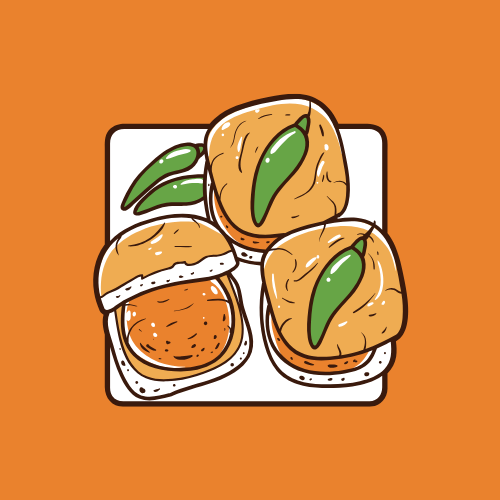
Vada pav, often celebrated as Mumbai’s second lifeline after the bustling metro trains, is an Indian street food. In the vibrant cityscape where skyscrapers reach for the sky, you can always spot a humble vada pav stand nestled among them. This snack features a soft bun, known as pav in Hindi, with a golden, crispy fried potato patty called vada. I like to eat it with peanut dry chutney and fresh shallow fried green chilies.
In contrast, the samosa presents another wonderful, timeless snack. These pastries, shaped like triangles, are filled with a mixture of spiced potatoes and peas, and covered in a golden, flaky crust after being fried to perfection. Beyond its deliciousness, the samosa has seen a lot – it’s been an iconic treat through the generations.
On those rare Sunday mornings when work is light, people often find themselves at the samosa stand. They often buy samosas, accompanied by a box overflowing with sugary, syrupy jalebi. Although this breakfast choice might not be the epitome of health, the sheer joy it brings—nestled together with laughter and memories—makes it all worthwhile.
2. Chicken Biryani

Biryani is a dish that beautifully combines rice and chicken, crafted by layering them together with spices, much like a savory cake. This method ensures an even distribution of flavors throughout the dish. While many restaurants often emphasize its fiery spiciness, a well-crafted biryani reveals layered tastes, where the heat is just one characteristic of its personality. Although some might consider it unhealthy due to its oil content, biryani can be made healthier by using lean proteins and reducing fat without compromising flavor which is how we make it. Additionally, the choice of rice can vary, adding even more depth to this cherished dish.
In my home, biryani is a special staple we prepare on alternate weekends. During these times, the air fills with an inviting aroma that wafts through the open windows. One time, when my friends were standing beneath my window, they texted me, “Hello Human, what is your mom cooking for dinner tonight? Please tell her it smells amazing!” Ultimately, biryani is more than just a meal; it represents a beloved tradition that fosters connections among people.
3. Dal Makhani
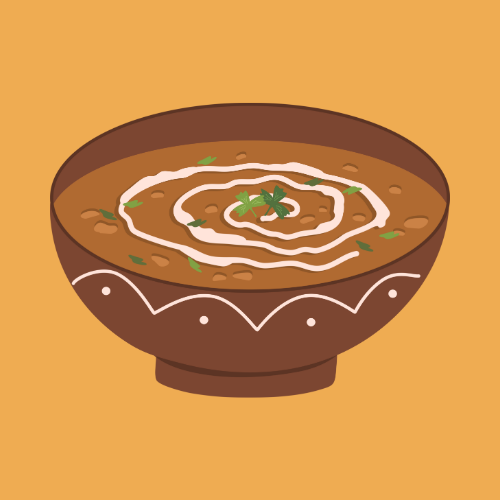
Dal Makhani is a beloved gem in Indian cuisine. It showcases the rich and distinctive flavors of urad dal, or black gram. Although often overshadowed by more commonly known lentil dishes, this delightful preparation defies the assumption that all dals share the same taste profile. In reality, the diverse world of lentils reveals a variety of flavors and textures, and Dal Makhani is a shining example.
The term “dal” refers to lentils, while “makhani” translates to butter. However, don’t let this term mislead you into thinking it is simply a buttery excess; rather, this dish embodies a beautiful balance of creaminess without the heaviness of grease. It stands out as a nutritious option, lovingly prepared, and commonly featured in the daily meals of countless households across India.
Simple yet profoundly satisfying to make, Dal Makhani is favored for both lunch and dinner. Its rich, hearty nature makes it an ideal companion to a variety of Indian breads, from roti to paratha, as well as a comforting bowl of rice.
4. Chole Bhature
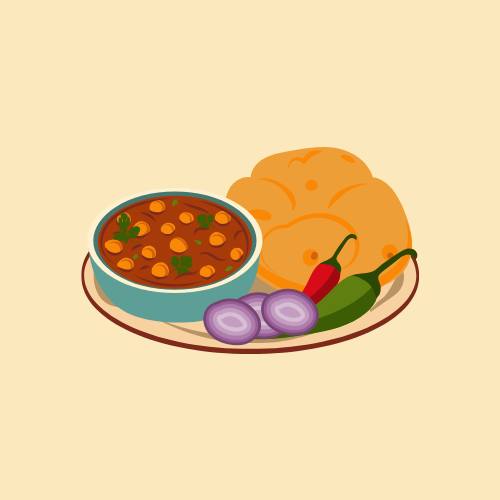
Chole Bhature is native to the northern regions of the subcontinent, often gracing the tables at weddings, festive gatherings, and cultural celebrations. This unforgettable dish consists of a chickpea curry, known as chole, simmered to perfection with a bunch of spices, then paired with bhature, a fried Indian flatbread. The bhatura is not just a side; its size can be as vast as, or even larger than, one’s own face.
While Chole Bhature is a treat for the taste buds, it’s important to note that it is quite rich and heavy, making it a dish best savored in moderation. With its aromatic curry and golden, fluffy bhature, one serving is typically more than enough to fulfill even the biggest appetites.
During cultural events within my community, Chole Bhature often commands the spotlight, drawing crowds. Despite a long stand of 20 different food choices, it’s the Chole Bhature stall that consistently attracts the longest line of eager food lovers. As the queue grows longer, it sometimes exceeds the availability of the dish.
5. Pav Bhaji
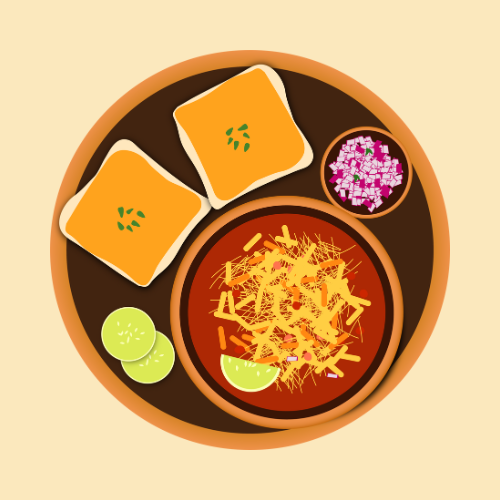
Pav Bhaji is a dish that can be found on nearly every street corner, predominantly in the Western part of India. This delightful meal features pav (buttered buns), accompanied by the star of the dish: bhaji, a vegetable curry.
Unlike typical tomato-based curries, bhaji relies on a mixture of potatoes, carrots, and cauliflower, which are mashed together to create a creamy, thick texture. This means that if you’re someone who enjoys picking out individual vegetables from your meals, bhaji might not be the ideal choice for you. However, there’s a good chance that you’ll learn to appreciate the vegetables!
If bought by a local vendor, bhaji often packs a spicy punch – one of the great joys of preparing bhaji at home is the ability to tailor the spice level to your liking, ensuring that it’s both enjoyable and edible, without any fiery surprises that could leave your mouth burning!
6. Kathi rolls

Originating from Kolkata, the Kathi roll is a lesser-known Indian dish. The term “Kathi” refers to a stick or skewer, which highlights the way kebabs are prepared. Various types of chicken kebabs, such as chicken tikka and hara bhara kebab, are wrapped in a flaky paratha (an Indian flatbread). The roll is often filled with an assortment of fresh vegetables like carrots and onions, complemented by chutneys such as green chutney and coriander chutney.
One of the best things about Kathi rolls is that they are easy to make at home, making them an affordable and healthy option, especially considering that they require minimal oil. I remember a time when I was so obsessed with Kathi rolls that every time we ordered takeout, I would always order one. I probably tried every Kathi roll available at the shop! My mom eventually got tired of my choice, but I didn’t mind—I just loved eating them.
7. Stars of Southern India: Rasam Rice & Dosa
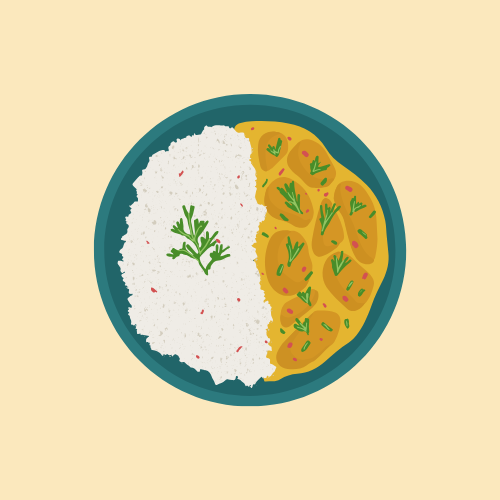
Rasam and dosa are two staple dishes of South Indian cuisine, yet they often remain underrated in many restaurants. Despite “rasam” translating to “soup,” this label doesn’t do justice to its unique characteristics. It bears more resemblance to sambhar, another celebrated South Indian dish also referred to as a soup. Rasam offers a bold and complex flavor profile, with its distinctive tanginess, spice, and a light, watery texture. For me, it is my go-to comfort food after chicken.
On the other hand, dosa is a golden-brown crepe, made from a fermented batter of rice and lentils. This fermentation lends dosa a delightful saltiness balanced with a subtle sourness. Traditionally, it’s served with many chutneys including green chutney, coconut chutney, and sambhar. I also enjoy having rasam alongside the dosa. For an added treat, dosa pairs wonderfully with aloo masala—a spicy mixture of mashed potatoes.
The best dosas are those that are freshly cooked and have a crispy exterior and a soft interior. However, making them for a whole family can present a challenge. The moment someone begins to eat a dosa it’s nearly impossible to pull them away. I recall a day when my mother was cooking dosas; I ate so many of them I lost track of count. All I know is that I ate at least 5 of them—quite an impressive feat, especially considering each dosa is as large as your face!
8. Tandoori Chicken
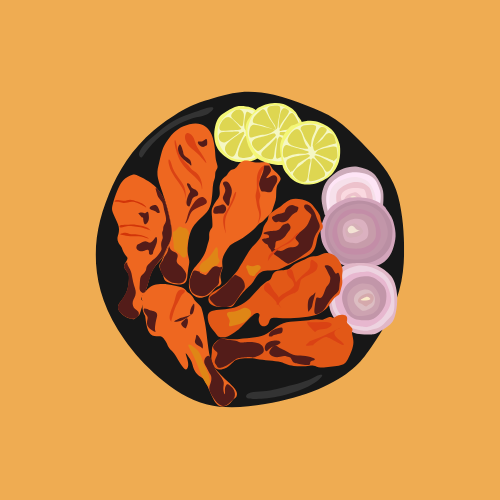
Red is the first word that comes to mind when anyone thinks of tandoori chicken. Because red is often associated with something spicy, many people assume that tandoori chicken is very hot. While this can be true, when made properly, tandoori chicken offers a variety of flavor depths. The dish consists of chicken marinated in yogurt and spices and is traditionally cooked in a tandoor, which is a clay oven. If a tandoor is not available, the chicken can easily be made in a regular oven.
Whenever tandoori chicken is made there is always one big confusion: How many should we buy? My mom and brother say two per person while me and my dad say three per person. The final result: a total of 10 leg pieces of chicken, four for my mom and brother and six for me and my dad.
9. Ras Malai
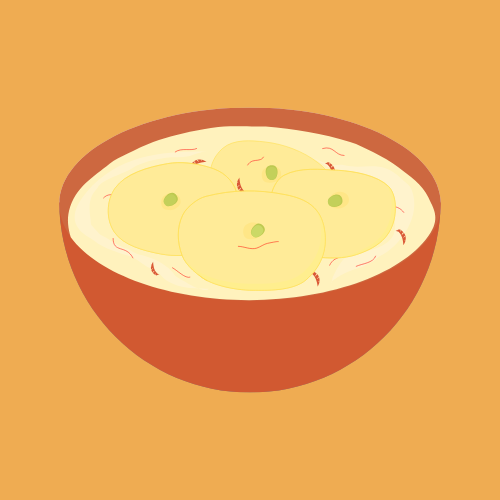
Ras Malai is an incredibly underrated Indian sweet dish that originates from the Bengali region of the Indian subcontinent. In Bengali, it is called Roshmalai. This delightful dessert is made from flattened balls of chenna, a type of acid-set cheese, which is soaked in malai.
The preparation begins with boiling milk and adding a few drops of lemon juice to curdle it. The mixture is then strained using a thin muslin cloth to obtain chenna. This chenna is kneaded into a dough, shaped into small balls, and then flattened. The milk used for soaking the balls is often enhanced with cut pistachios, saffron, and occasionally rose water.
Ras Malai is my all-time favorite dessert, especially when served cold. Whenever I buy it, there’s usually a plan to save some for the evening, but by that time, only a few pieces are left because I can’t resist eating it all! My self-control when it comes to this sweet treat is nonexistent; every time I open the fridge, I can’t help it!
10. Gulab Jamun
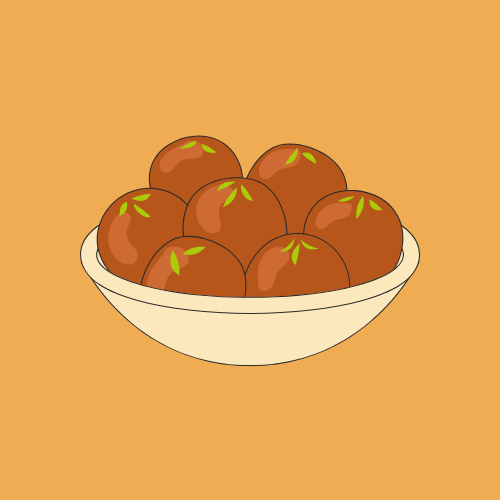
Gulab Jamun is an extremely sweet dish that has many variations such as the rich kala jamun and the stuffed gulab jamun. The dessert is also very versatile; you can play with its forms, crafting either delightful round spheres or elongated cylinders. This treat holds a special place in my heart as it is my mom’s favorite, and the process of making it together is always filled with joy.
Gulab Jamun is made from khoya, which is kneaded with flour and then formed into balls that are deep-fried. “Gulab” means rose in Hindi, referring to the rose-flavored sugar syrup that accompanies this dessert. The syrup is typically infused with cardamom, rose water, and sometimes saffron. For garnish, many people like to add edible silver foil.
In some cases, after soaking the balls in syrup, the syrup is drained, and the balls are enjoyed on their own. During Diwali, my mom would knead the dough while I rolled it into balls. Visiting my maternal grandparents’ house was always a treat – the local sweet shops offered giant gulab jamuns that would leave a lasting imprint on my memory, as their sugary essence lingered long after the last bite.








